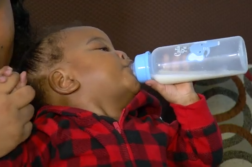BIRMINGHAM, Ala. (Ivanhoe Newswire) – The numbers are staggering. Right now, about 100,000 people are on a waitlist for kidney transplants but there aren’t enough donors. While they haven’t perfected it, researchers are working to see if some animals might be able to fill the gap.
When it comes to saving lives for people with kidney disease, the math just does not add up. kidney transplants
“When you think about 37 million Americans with chronic kidney disease and at any given time, six to 800,000 have actual kidney failure. And we only waitlist 80 to 100,000 and we only transplant 25,000,” mentions Jayme E. Locke, MD, MPH, Arnold G. Diethelm MD Endowed Chair in Transplantation Surgery at the University of Alabama at Birmingham, Heersink School of Medicine.
Researchers at the University of Alabama at Birmingham are some of the first to fill the need with xenotransplantation.
Dr. Locke explains, “The goal, of course is to sort of really basically eliminate that gap between supply and demand. And in our case we’re hoping to do that with pig organs. Well interestingly, pigs actually have kidney function that’s quite similar to human.”
Researchers use a CRISPR, which is a genetic editing tool, to edit out genes that would cause a human body to reject the organ.
“It kind of tricks the human immune system into thinking it’s something from a human,” Dr. Locke adds.
And because pigs can live 30 years — researchers believe the organ will last that long for humans — and they hope to use more organs from pigs.
Dr. Locke says, “And so, I think, certainly, those of us in xenotransplantation see a future in which one pig can donate a heart, a pair of lungs, a liver, a kidney, maybe even a pancreas.”
Several pig organ transplant recipients have died in recent months following their operation. It’s important to remember that xenotransplantation is still very much in the experimental stages but researchers are committed to perfecting this alternative source of organs when human organs are not available. The next step will be a clinical trial to seek FDA approval.
Contributors to this news report include: Marsha Lewis, Producer; Matt Goldschmidt, Videographer; Roque Correa, Editor.
To receive a free weekly e-mail on medical breakthroughs from Ivanhoe, sign up at: http://www.ivanhoe.com/ftk
Source:



